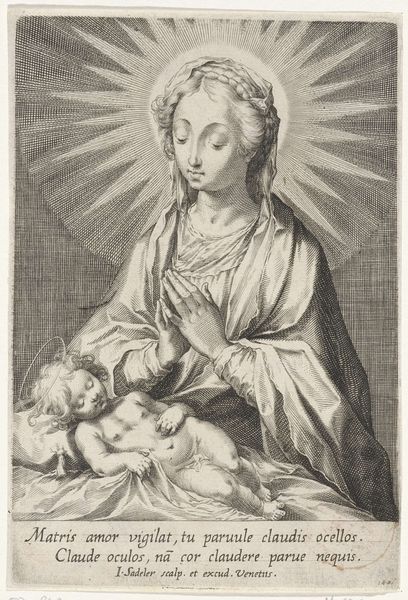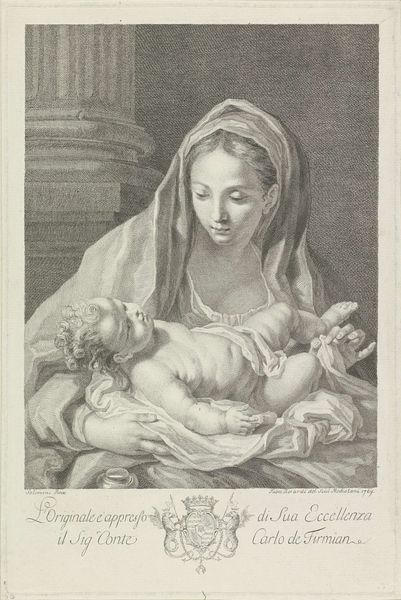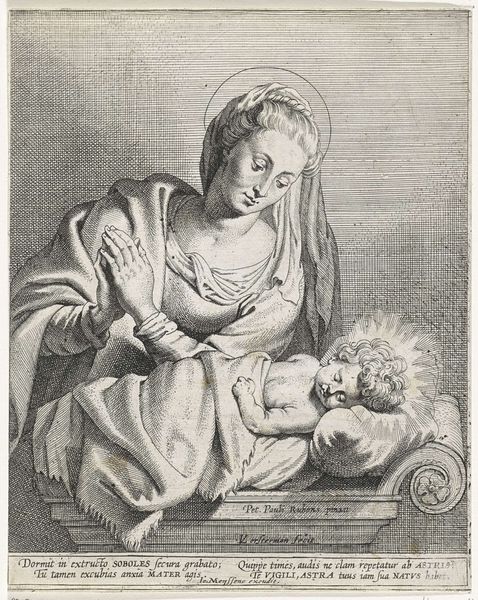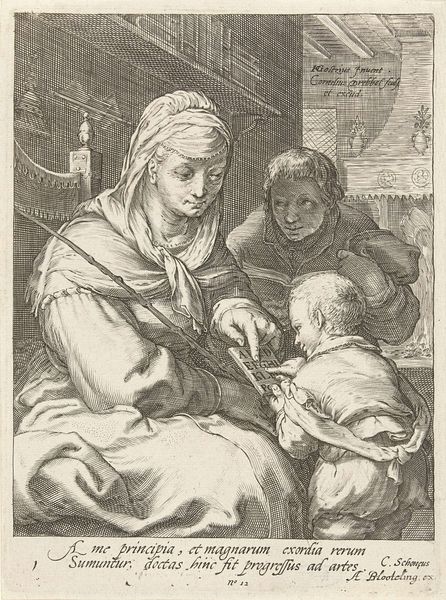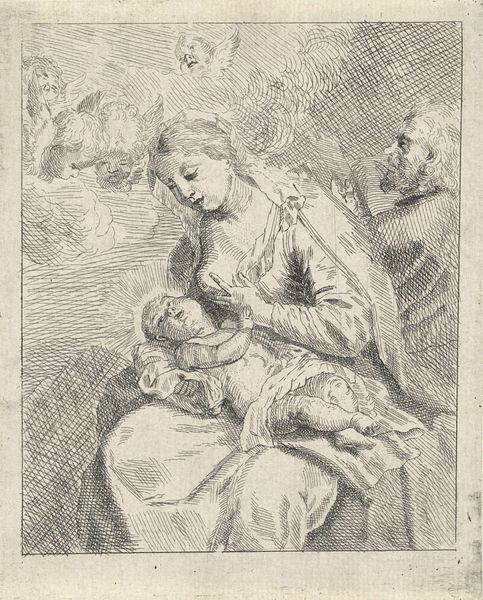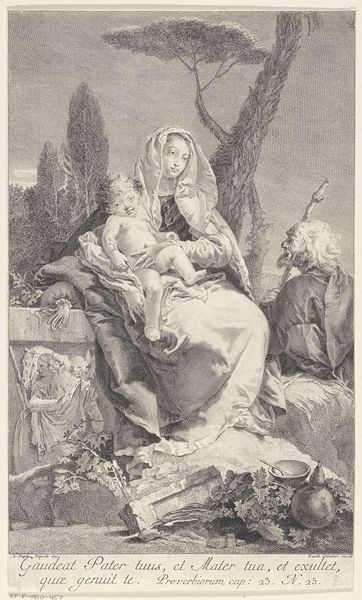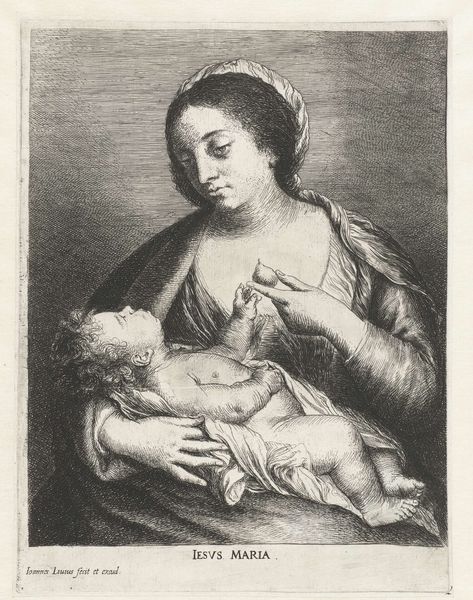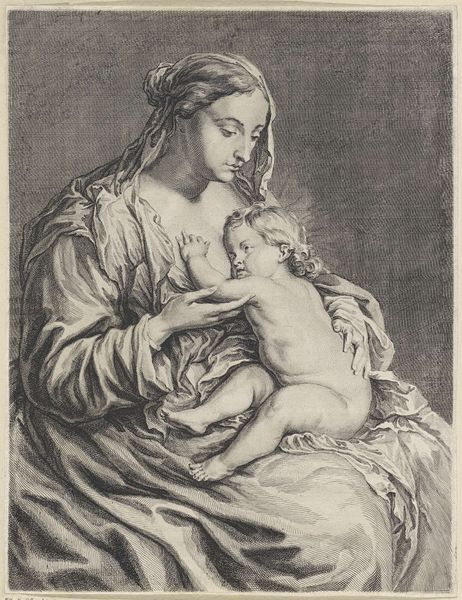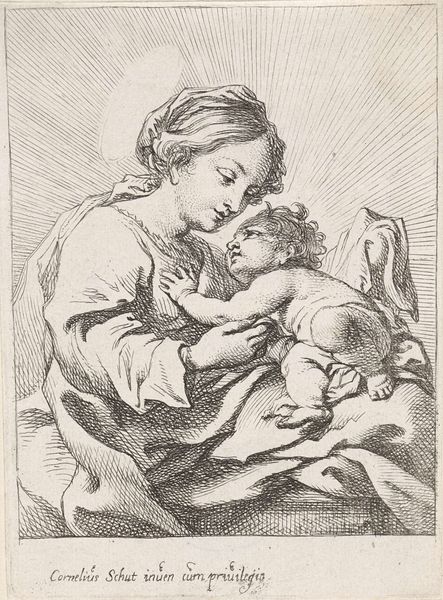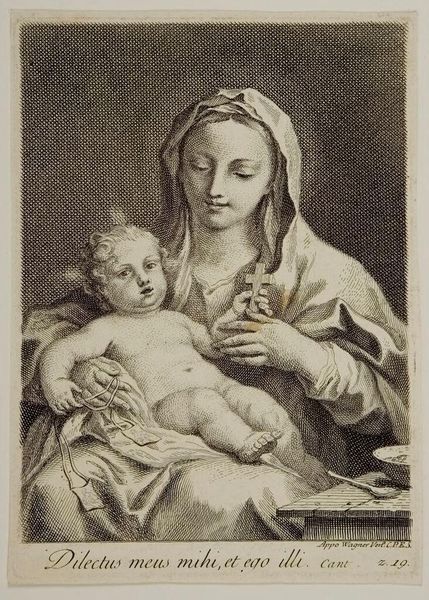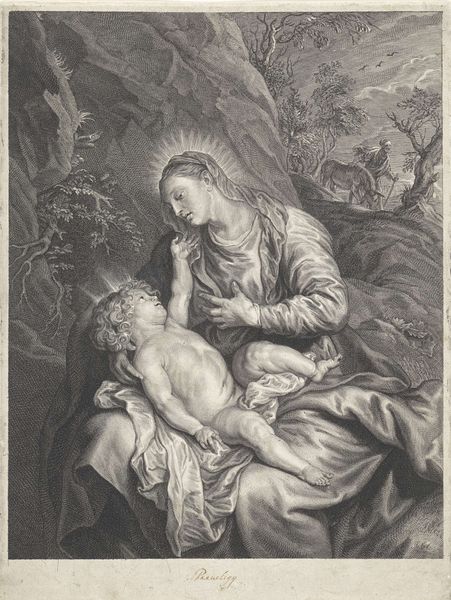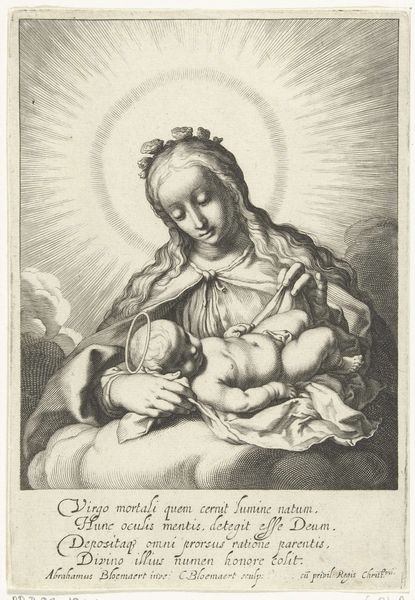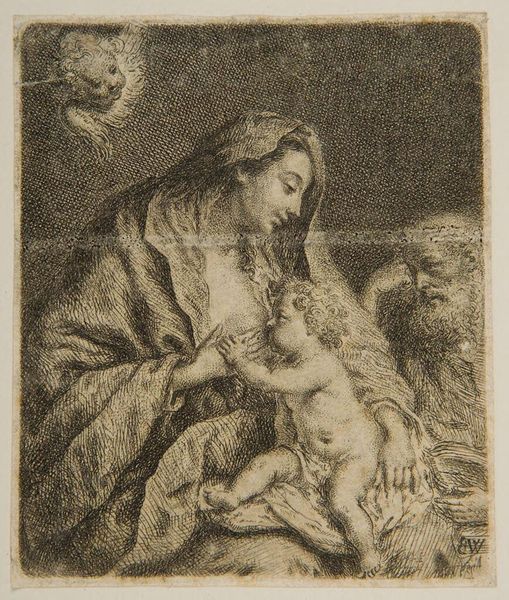
drawing, print, ink, engraving
#
portrait
#
pencil drawn
#
drawing
#
baroque
# print
#
pencil sketch
#
ink
#
pencil drawing
#
portrait drawing
#
pencil work
#
history-painting
#
engraving
Dimensions: height 179 mm, width 137 mm
Copyright: Rijks Museum: Open Domain
Editor: This is "Maria met kind" by Jacopo Amigoni, dating from somewhere between 1685 and 1752. It's currently held at the Rijksmuseum. I find the delicate lines and use of ink and engraving so beautiful. It gives a gentle, loving impression. What strikes you about it? Curator: The use of engraving here immediately raises questions about production. How many of these were made? Who had access to them, and at what price? Remember, engraving, unlike painting, lends itself to reproduction and dissemination, turning a devotional image into a commodity. Editor: That’s interesting. I hadn’t thought of it in terms of a commodity. Were engravings considered less "high art" than paintings at this time? Curator: Absolutely. Consider the social hierarchy of art production: painting was often commissioned by the wealthy, signifying status, whereas engravings catered to a broader audience, introducing elements of labor, cost, and consumerism into the equation. Amigoni likely profited from the repetitive, skilled labor needed for its creation, something easily overlooked. Editor: So the value isn't just in the image itself, but also the whole process of how it was created and distributed. Was Amigoni unusually focused on this production aspect? Curator: Amigoni wasn’t alone. Many artists understood the market, producing engravings alongside paintings to increase their income and reach. It calls into question our romantic ideas of the singular, divinely inspired artist. The materials, the labor, and the market forces behind ‘Maria met kind’ shaped its meaning as much as its visual appearance. Editor: I never considered it that way. It sheds light on how the value and status of art is constructed, not inherent. Curator: Exactly. By analyzing the materials and production methods, we challenge those very boundaries between “high art” and everyday consumption. This reveals the complex interplay of art, commerce, and society during the Baroque period.
Comments
No comments
Be the first to comment and join the conversation on the ultimate creative platform.
